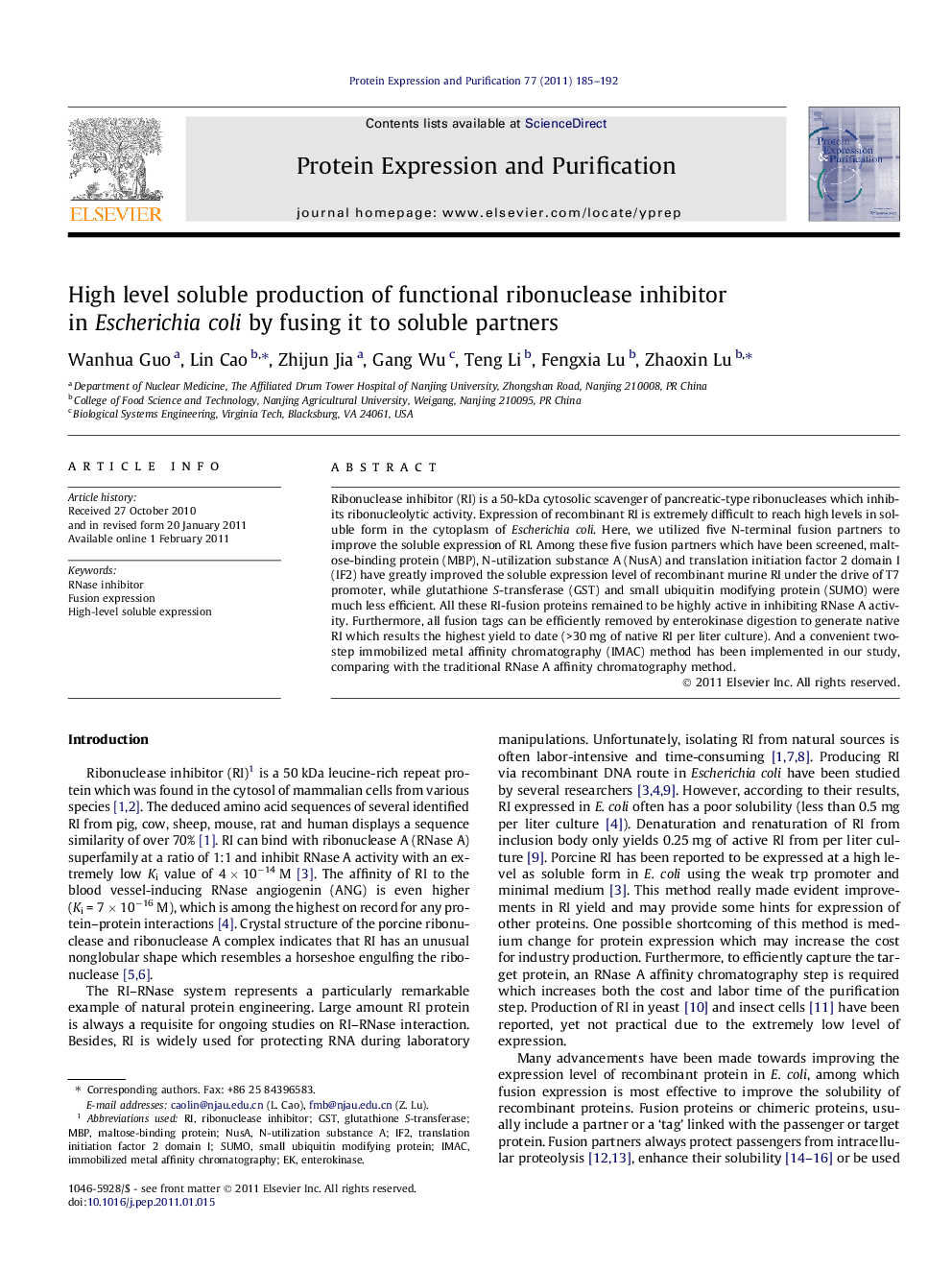| Article ID | Journal | Published Year | Pages | File Type |
|---|---|---|---|---|
| 2020781 | Protein Expression and Purification | 2011 | 8 Pages |
Ribonuclease inhibitor (RI) is a 50-kDa cytosolic scavenger of pancreatic-type ribonucleases which inhibits ribonucleolytic activity. Expression of recombinant RI is extremely difficult to reach high levels in soluble form in the cytoplasm of Escherichia coli. Here, we utilized five N-terminal fusion partners to improve the soluble expression of RI. Among these five fusion partners which have been screened, maltose-binding protein (MBP), N-utilization substance A (NusA) and translation initiation factor 2 domain I (IF2) have greatly improved the soluble expression level of recombinant murine RI under the drive of T7 promoter, while glutathione S-transferase (GST) and small ubiquitin modifying protein (SUMO) were much less efficient. All these RI-fusion proteins remained to be highly active in inhibiting RNase A activity. Furthermore, all fusion tags can be efficiently removed by enterokinase digestion to generate native RI which results the highest yield to date (>30 mg of native RI per liter culture). And a convenient two-step immobilized metal affinity chromatography (IMAC) method has been implemented in our study, comparing with the traditional RNase A affinity chromatography method.
